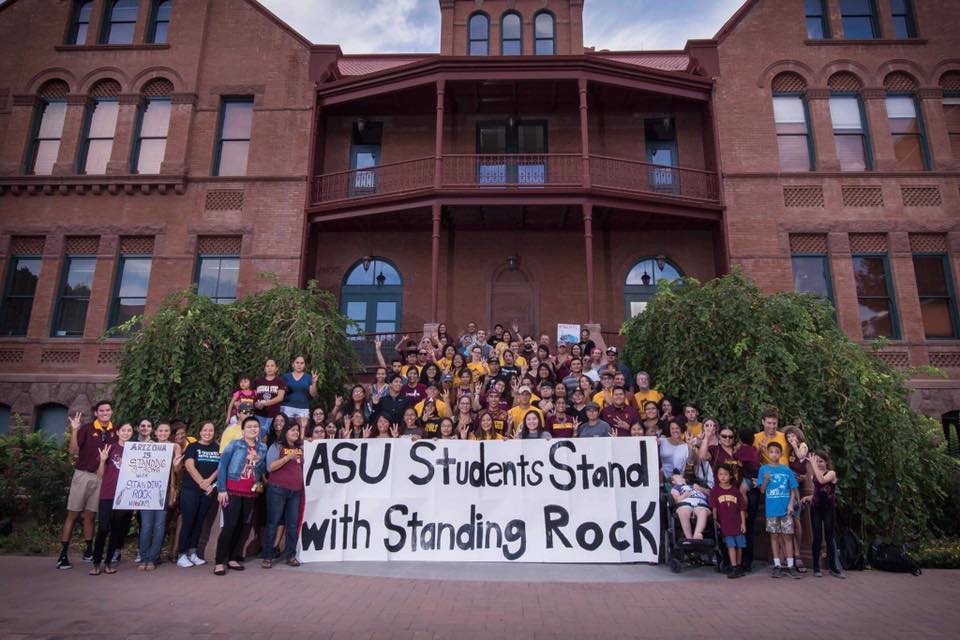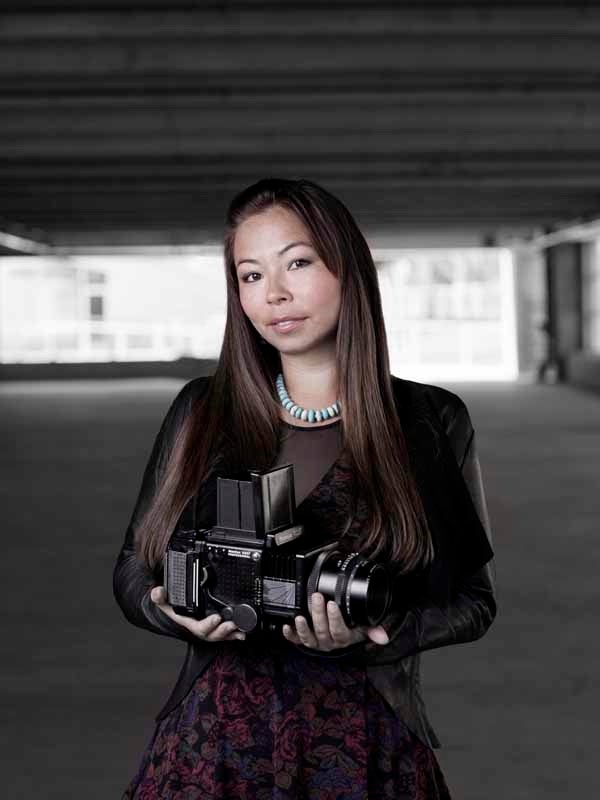ASU English lit and public policy major Megan Tom says it can be tough for Native Americans living away from their home communities for the first time.
Underrepresentation and pervasive stereotypes mean that many in mainstream society carry misguided notions of what it means to be an American Indian today, making students such as herself representatives for a population of more than 5 million people from more than 560 distinct tribes across the U.S.
“It’s exhausting giving Native 101 to everyone,” the fourth-year Navajo student from Cameron, Arizona, said.
To ease that individual burden, build connections and break down stereotypes, Tom, president of ASU’s American Indian Council, and other indigenous student groups at Arizona State University have created a series of events for Native American Heritage Month.
November represents an opportunity, Tom said, to share the “perspective from a larger community.”
The Nov. 1 kickoff celebration at the Memorial Union on the Tempe Campus starts at 11:30 a.m. and will include frybread, cultural performances and information on American Indian organizations.
Next week, “Water is Life #NoDAPL” will address the ongoing protest at the Standing Rock Indian Reservation in North Dakota. The Standing Rock Souix tribe and their supporters are lining up to block the 1,000-mile Dakota Access Pipeline. Developers say the pipeline will boost the economy and make the U.S. less beholden to foreign countries. Protesters say it cuts through sovereign territory and could contaminate the area’s drinking water.
The Nov. 8 eventHosted by the American Indian Science Engineering Society, Construction In Indian Country Student Organization, and American Indian Council. will run from 11 a.m. to 1 p.m. and feature Native students and pipeline protesters who can explain their perspective to attendees.
ASU students showing their support for Standing Rock protesters.
Tom said it’s especially important because some young people dressed up as pipeline protesters for Halloween.
“This is a fight for water, a basic human necessity,” she said, adding that it’s “frustrating” that people would make a joke of it. “It shows where we are in the nation’s perspective of Native people.”
“Changing the Way We See Native America: Dismantling Native American Stereotypes,” meanwhile, will feature photography from the Project 562, led by Matika Wilbur, of the Swinomish and Tulalip Tribe in Washington state.
The Nov. 22 eventHosted by the Womyn’s Coalition, Rainbow Coalition and American Indian Council. will start at 6 p.m. on ASU’s Polytechnic campus. Wilbur said the project’s name comes from the number of federally recognized tribes in the U.S. when she started. There are now 566 recognized tribes. She is working to photograph everyday, modern Native people on tribal lands to break down longstanding stereotypes.
“It’s quite obvious that the popular understanding of a Native American is that of a noble savage or spiritual being,” Wilbur said. “Nothing could be further from the truth.”
Photographer and social documentarian Matika Wilbur.
ASU interdisciplinary studies major Emerald Byakeddy said such work is important because “a lot of people don’t understand that” American Indians “are not one-dimensional.”
Sometimes people “can’t understand until they’ve been in your skin,” the Navajo senior from Tuba City, Arizona, said.
“Deconstructing Stereotypes and Abolishing the R-word: A Discussion on the Use of Sports Masots” will get into the problems many Native people see with the images and names associated with the Cleveland Major League Baseball franchise and the Washington, D.C., professional football team.
The Nov. 28 eventHosted by ASU American Indian Studies Department. will start at 6 p.m. at the Memorial Union on the Tempe campus.
“The perception of Native Americans is not even of a vanishing race but a vanished race, even in Arizona where school kids continue to say things like, ‘I thought all Indians were dead,’” said Bryan McKinley Jones Brayboy, President’s Professor, director of the Center of Indian Education and ASU’s special adviser to the president on American Indian Affairs. “These perceptions and stereotypes still exist and persist, and it’s complicated.”
More than 2,600 Native American students attend ASU, which recently saw its largest graduating class of over 360 in May.
Brayboy said the mascot conversation “is pretty timely” because of Cleveland’s place in the World Series. “If you look at the caricature of what Chief Wahoo looks like what you see is a caricature — and it’s a pretty hateful one, from where I sit — but it locates us in a past moment.”
“We need to expose our kids,” Brayboy said, “to modern versions of Native people. This is exactly what our students do — they represent the very best of the present and future selves of Native Nations.”
Other events include:
• Zuni Pueblo: Culture, History, Language & Art with Matthew Yatsayte, 11:30 a.m.–12:30 p.m., Nov. 4, Discovery Hall 313, Tempe campus
• 16th Annual Veterans Day Weekend Traditional Pow Wow, 11 a.m.–10 p.m., Nov. 12, Fletcher Library Lawn, West campus
• Celebrating Native Americans in the Law: Judge Diana Humetewa, 12:15 p.m.–1:15 p.m., Sandra Day O’Connor College of Law, Downtown Phoenix campus
• One Word Indian Two Communities, 5–8 p.m., Nov. 17, Sparky’s Den, ASU Memorial Union, Tempe campus
• 22nd Annual Josiah N. Moore Memorial Scholarship Benefit Dinner, 6–9 p.m., Nov. 19, Carson Ballroom, Old Main, Tempe campus
For a full listing of scheduled events, go here.
Top image: Chief Bill James of the Lummi Nation at a sacred site in the northwest corner of Washington State. Photo taken by Matika Wilbur for Project 562.
More Local, national and global affairs

Military program leaders learn about breadth of ASU's defense-focused initiatives
Arizona State University seeks to be the U.S. military’s top partner in strategic learning and innovation. To advance this vision, the Office for Veteran and Military Academic Engagement hosted…

Expert discusses America's place in outer space with ASU students
If you asked Esther Brimmer about what security issue the United States should focus on next, she might say the moon. In fact, that’s exactly what she recently told a student at an event hosted by…
Arizona nonprofits eager for guidance to address changing federal policies, ASU report finds
In the weeks following a series of executive orders reducing federal funding, including grants to nonprofits, Arizona State University’s Lodestar Center for Philanthropy and Nonprofit Innovation…




